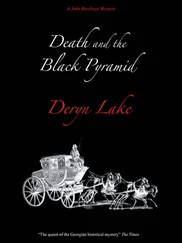Such admirable common sense was the exception. The European, in the face of the Black Death, was in general overwhelmed by a sense of inevitable doom. If the plague was decreed by God and the inexorable movement of the planets, then how could frail man seek to oppose it? The preacher might counsel hope, but only with the proviso that the sins of man must first be washed away by the immensity of his suffering. The doctor might prescribe remedies, but with the tepid enthusiasm of a civil-defence expert advising those threatened by imminent nuclear attack to adopt a crouching posture and clasp their hands behind their necks. The Black Death descended on a people who were drilled by their theological and their scientific training into a reaction of apathy and fatalistic resignation. Nothing could have provided more promising material on which a plague might feed.
THE Black Death arrived in Sicily early in October 1347, about three months before it reached the mainland. According to Michael of Piazza, {69} 69 1 Michael of Piazza (Platiensis), Bibliotheca scriptorum qui res in Sicilia gestas retulere, Vol. 1, p. 562.
a Franciscan friar who wrote his history some ten years later, twelve Genoese galleys brought the infection to the port of Messina. Where they came from is unknown; possibly also from the Crimea, though they must have left the area several months before the galleys which bore the Black Death from Caffa to Genoa and Venice. Nor can one now know whether the disease was borne by rats and fleas or was already rampant among members of the crew; the chronicler’s description of ‘sickness clinging to their very bones’ suggests the latter.
Within a few days the plague had taken a firm grasp on the city. Too late to save themselves, the citizens turned on the sailors who had brought them this disastrous cargo and drove them from the port. With their going, the Black Death was scattered around the Mediterranean but Messina’s sufferings were no lighter for its dispersion. With hundreds of victims dying every day and the slightest contact with the sick seeming a guarantee of rapid infection, the population panicked. The few officials who might have organized some sort of measures to mitigate the danger were themselves among the first to perish. The people of Messina fled from their doomed city into the fields and vineyards of southern Sicily, seeking safety in isolation and carrying the plague with them through the countryside.
When the first victims reached the neighbouring city of Catania they were lodged in the hospital and kindly treated. But as soon as the Catanians realized the scale and nature of the disaster they concluded that, by accepting the refugees, they were condemning themselves to the same fate. Strict control over immigration was introduced and it was decreed that any plague victim who had already arrived and subsequently perished should be buried in pits outside the walls. ‘So wicked and timid were the Catanians,’ wrote Michael of Piazza, ‘that they refused even to speak to any from Messina, or to have anything to do with them, but quickly fled at their approach.’ What was wickedness in the eyes of the doomed of Messina must have seemed elementary prudence to the menaced of Catania. The same pattern of behaviour was to be repeated all over Europe but rarely did it do any good to those who sought to save themselves by cutting themselves off from their neighbours. The Black Death had already breached the walls of Catania and nothing could stop it running riot through the population.
The Messinese now appealed to the Patriarch Archbishop of Catania to allow the relics of St Agatha to be taken from Catania to Messina. The Patriarch agreed but the Catanians, not unnaturally feeling that charity began at home and that St Agatha should remain at her post in her own cathedral, rose in protest. ‘They tore the keys from the sacristan and stoutly rebuked the Patriarch, saying that they would rather die than allow the relics to be taken to Messina.’ The Patriarch, who must have been a man of singular courage, accepted the mob’s decision but insisted at least on dipping some of the relics in water and personally taking the water with him to Messina.
‘The aforesaid Patriarch,’ reads Michael of Piazza’s account,
landed at Messina carrying with him the holy water… and in that city there appeared demons transfigured into the shape of dogs, who wrought grievous harm upon the bodies of the citizens; so that men were aghast and dared not go forth from their houses. Yet by common consent, and at the wish of the Archbishop, they determined to march devoutly around the city reciting litanies. While the whole population was thus processing around the streets, a black dog, bearing a drawn sword in his paws, appeared among them, gnashing with his teeth and rushing upon them and breaking all the silver vessels and lamps and candlesticks on the altars, and casting them hither and thither…. So the people of Messina, terrified by this prodigious vision, were all strangely overcome by fear.
This description exemplifies the curious blend of sober eye-witness reporting and superstitious fantasy which is characteristic of so many similar chronicles. How much of it should one believe? How much of it, for that matter, did Michael of Piazza believe himself? Rabies was endemic in Sicily and, since nobody can have had the time or energy to keep mad dogs in check, it is not surprising that there should have been an unusally large number running in the streets. In the circumstances the panic-stricken Sicilian can hardly be blamed for detecting some supernatural influence in their activities. But did the chronicler really believe that he, or some other reliable witness, had actually seen a black dog with a drawn sword in its paws? Or was the statement no more than an expression in symbolic terms of the chronicler’s belief in the dog’s daemonic possession? Probably Michael of Piazza himself would hardly have known the answer. Medieval man skated on the thinnest possible ice of verified knowledge with beneath him unplumbed and altogether terrifying depths of ignorance and superstition. Let the ice break and with it was lost all grasp on reality and all capacity for objective, logical analysis.
The people of Messina, disappointed of St Agatha’s relics, then set off barefoot in procession to a shrine some six miles away where was to be found an image of the Virgin said to possess exceptional powers. Once again they were discomfited and, in their discomfiture, Michael of Piazza saw another proof that the plague was God’s retribution on his erring people.
This aforesaid Mother of God, when she saw and drew near unto the city, judged it to be so hateful and so profundly stained with blood and sin that she turned her back upon it, being not only unwilling to enter therein, but even abhorring the very sight thereof. For which cause the earth yawned open and the horse which bore the image of the Mother of God stood fixed and motionless as a rock.
Eventually the animal was bullied or cajoled into the city and the Virgin lodged in Santa Maria la Nuova, the largest church of the city. But little good did it do the unfortunate Messinese. ‘…this coming of the image availed naught; nay, the pestilence raged so much the more violently that one man could not succour another but the greater part of the citizens deserted Messina and were scattered abroad.’
After his return from Messina the gallant Patriarch succumbed to the disease which he had combated so stoutly. He was buried in the Cathedral at Catania. By his behaviour and by his death he set a standard which was to be matched by few indeed of his peers.
* * *
Quickly the plague spread over Sicily, ravaging with especial violence the towns and villages at the western end. It was not for long confined to such narrow limits. Sicily, as Professor Renouard dryly remarks, {70} 70 2 ‘La Peste Noire’, Revue de Paris, March 1950, p. 108.
‘fulfilled its natural mission as a centre of the Mediterranean world’. From thence it spread probably to North Africa by way of Tunis; certainly to Corsica and Sardinia; the Balearics, Almeria, Valencia and Barcelona on the Iberian peninsula; and to Southern Italy. It is remarkable, in this as in every other epidemic of bubonic plague, how closely the disease followed the main trade-routes. {71} 71 3 André Siegfried, Itinéraires des contagions: épidémies et idéologies, Paris, 1960, p. 114.
Largely, of course, this is a token of the role which the rat played in the propagation of plague. But whether the Black Death travelled by rat, by unescorted flea or by infected sailor, ship was the surest and most rapid means. The Black Death, indeed, is peculiar among plagues in that the particularly high incidence of its pneumonic variant meant that it struck inland with unusual vigour. But even though it could thus attain the hinterland, its first target was still the coastal towns. It travelled from the Crimea to Moscow not overland but by way of Italy, France, England and the Hanseatic ports. {72} 72 4 Coulton, Black Death, op. cit., p. 9.
Читать дальше












